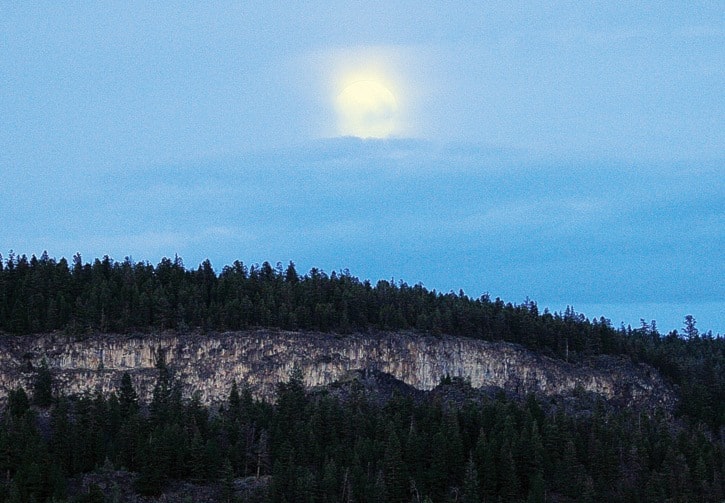The second full moon of August, and the last full moon of summer, emerges from the clouds above an ancient lava escarpment on the north side of the Chilcotin River valley at Alexis Creek on Aug. 31.
With the first of the 12 astronauts to have walked on the moon, in the six 1969 to 1972 landings, having died in August, this moon seems a little further from us.
Reflected from the sun, the light from the moon has reached our Earth in a mere 1.26 seconds. But the starlight from Vega, the third brightest star in our northern sky, shinning directly overhead at twilight now, has taken 25 years to arrive; Vega’s actual brightness is 50 times that of our Sun. Though considerably further than the moon, Vega is our stellar neighbor compared to its own apparent night sky neighbour to the east, Deneb, at the head of the Northern Cross and the 14th brightest northern star; the starlight radiating from Deneb has travelled for 1,500 years to reach us, from a star 200,000 times brighter than our sun.

Dan Hicks photo
